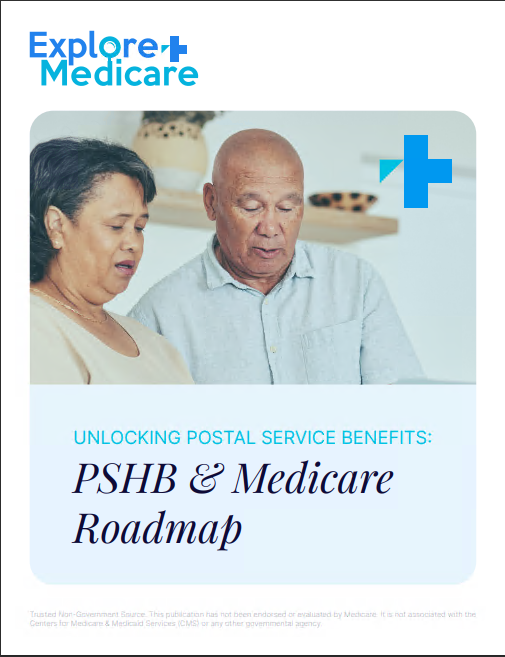Understanding Medicare Coverage Components
Medicare provides essential healthcare coverage to millions of Americans, offering various options to meet the diverse needs of beneficiaries. Understanding the different components of Medicare coverage is crucial for making informed decisions about healthcare options and managing associated costs.
Original Medicare (Parts A and B):
- Original Medicare consists of two main parts: Part A (Hospital Insurance) and Part B (Medical Insurance). Part A covers inpatient hospital stays, skilled nursing facility care, hospice care, and some home health services. Part B covers medically necessary services, such as doctor visits, outpatient care, preventive services, and durable medical equipment.
Medicare Advantage (Part C):
- Medicare Advantage plans, also known as Part C, are offered by private insurance companies that are approved by Medicare. These plans provide all the benefits of Original Medicare (Parts A and B) and may include additional benefits, such as prescription drug coverage (Part D), dental, vision, hearing, and fitness benefits. Medicare Advantage plans may have different costs and coverage options compared to Original Medicare.
Medicare Prescription Drug Coverage (Part D):
- Medicare Part D offers prescription drug coverage through private insurance companies approved by Medicare. Part D plans help beneficiaries afford the cost of prescription medications, covering both generic and brand-name drugs. Beneficiaries can enroll in a stand-alone Prescription Drug Plan (PDP) or choose a Medicare Advantage plan with prescription drug coverage (MA-PD).
Comparing Coverage Options
When evaluating Medicare coverage options, beneficiaries should consider factors such as coverage benefits, provider networks, out-of-pocket costs, and plan flexibility:
Original Medicare (Parts A and B):
- Original Medicare provides standardized coverage for essential healthcare services, allowing beneficiaries to visit any doctor or hospital that accepts Medicare nationwide. However, Original Medicare does not cover certain services, such as prescription drugs, dental, vision, and hearing care. Beneficiaries may need to purchase additional coverage, such as a Medicare Supplement Insurance (Medigap) policy, to help cover out-of-pocket costs not covered by Parts A and B.
Medicare Advantage (Part C):
- Medicare Advantage plans offer an alternative way to receive Medicare benefits through private insurance companies. These plans typically include all the benefits of Original Medicare (Parts A and B) and may offer additional benefits, such as prescription drug coverage, dental, vision, and hearing care. Medicare Advantage plans often have provider networks, and beneficiaries may need to choose healthcare providers within the plan’s network to receive coverage for services.
Medicare Prescription Drug Coverage (Part D):
- Medicare Part D provides coverage for prescription medications, helping beneficiaries afford the cost of necessary drugs. Part D plans vary in terms of formularies, coverage options, and out-of-pocket costs. Beneficiaries should compare Part D plans based on their current prescription drug needs, preferred pharmacies, and budgetary considerations.
Understanding Medicare Costs
Medicare coverage involves various costs, including premiums, deductibles, coinsurance, and copayments. Understanding these costs is essential for budgeting and planning healthcare expenses:
Premiums:
- Most beneficiaries do not pay a premium for Medicare Part A if they or their spouse paid Medicare taxes while working. However, beneficiaries may pay a monthly premium for Medicare Part B, based on income and enrollment timing. Medicare Advantage and Part D plans also charge monthly premiums, which vary depending on plan options and coverage benefits.
Deductibles:
- Medicare Part A and Part B have annual deductibles that beneficiaries must pay before Medicare coverage begins. Medicare Advantage and Part D plans may also have deductibles for certain services or prescription medications. Deductible amounts may change each plan year and vary by plan.
Coinsurance and Copayments:
- Medicare beneficiaries are responsible for coinsurance and copayments for covered services under Original Medicare (Parts A and B), Medicare Advantage, and Part D plans. Coinsurance is a percentage of the Medicare-approved amount for a service, while copayments are fixed amounts paid for each service or prescription medication.
Out-of-Pocket Maximums:
- Medicare Advantage plans set annual out-of-pocket maximums, which limit the amount beneficiaries pay for covered services each year. Once beneficiaries reach the out-of-pocket maximum, the plan pays 100% of covered services for the rest of the year. Original Medicare does not have an out-of-pocket maximum, but beneficiaries can purchase Medigap policies to help cover out-of-pocket costs not covered by Parts A and B.
Cost-Saving Programs and Resources
Medicare offers several cost-saving programs and resources to help beneficiaries manage healthcare expenses:
- Medicare Savings Programs (MSPs) help low-income beneficiaries pay for Medicare premiums, deductibles, coinsurance, and copayments. Eligibility and benefits vary by state, and beneficiaries must meet specific income and asset requirements to qualify for MSPs.
Extra Help (Low-Income Subsidy):
- Extra Help, also known as the Low-Income Subsidy (LIS) program, assists beneficiaries with limited income and resources in paying for Medicare prescription drug coverage (Part D). Extra Help covers premiums, deductibles, coinsurance, and copayments associated with Part D plans.
State Health Insurance Assistance Program (SHIP):
- The State Health Insurance Assistance Program (SHIP) provides free, personalized counseling and assistance to Medicare beneficiaries and their families. SHIP counselors can help beneficiaries understand Medicare coverage options, compare plan benefits, and navigate enrollment processes.
Conclusion: Maximizing Medicare Coverage and Minimizing Costs
Navigating Medicare coverage options and costs can be complex, but with careful consideration and the right resources, beneficiaries can maximize their coverage and minimize out-of-pocket expenses. By understanding the different components of Medicare coverage, comparing plan options, and leveraging cost-saving programs and resources, beneficiaries can make informed decisions about their healthcare and financial well-being.
Call to Action:
Ready to explore Medicare coverage options and minimize out-of-pocket costs? Connect with a Licensed Insurance Agent today to learn more about Medicare plans, compare coverage options, and enroll in the coverage that best meets your healthcare needs and budget. Download our comprehensive eBook for valuable insights into navigating Medicare coverage and costs.

